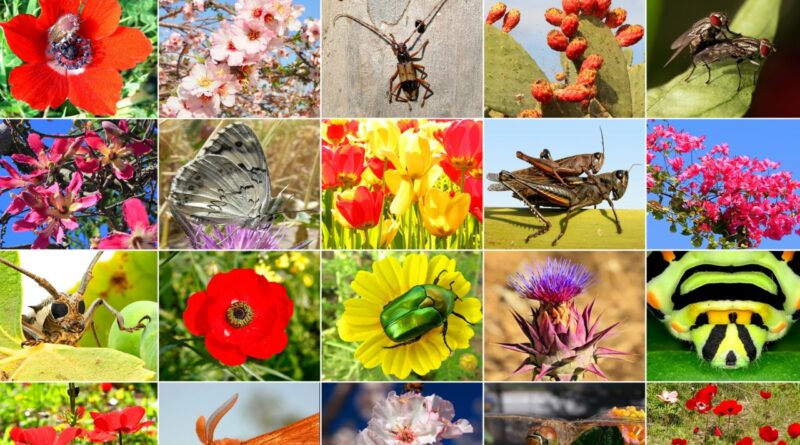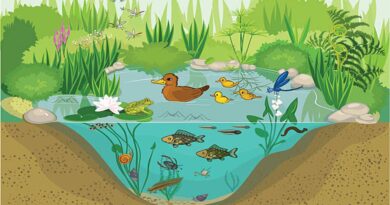What Is Biodiversity? – Definition, Types And Importance
Biodiversity is a combination of two words, Bio (life) and diversity (variety). Biodiversity is formally defined by the Convention on Biological Diversity (CBD) as: “the variability among living organisms from all sources including, among others, terrestrial, marine and other aquatic ecosystems and the ecological complexes of which they are part; this includes diversity within species, between species and of ecosystems”.
In simple terms, biodiversity is the number and variety of organisms found within a specified geographic region. It
refers to the varieties of plants, animals and microorganisms, the genes they contain and the ecosystems they form. It relates to the variability among living organisms on the earth, including the variability within and between the species and that within and between the ecosystems.
- According to the IUCN (2004), the total number of plant and animal species described so far is slightly more than 1.5 million, but there is no clear idea of how many species are yet to be discovered and described.
- Some extreme estimates range from 20 to 50 million, but a more conservative and scientifically sound estimate made by Robert May places the global species diversity at about 7 million.
BIODIVERSITY OF INDIA
- With only 2.4% of the world’s land area, its share of the global species diversity is an impressive 8.1 per cent
- This includes 45,500 recorded species of plants and 91,000 recorded species of animals.
- There is diversity of ecological habitats like forests, grassland, wetlands, coastal and marine ecosystems, and
desert ecosystems. - India is considered one of the world’s 17 “megadiverse” countries in terms of biodiversity.
- India has four global biodiversity hot spots (Eastern Himalaya, Indo-Burma, Western Ghats and Sri Lanka, and
Sundaland).
Mega-diverse countries
The megadiverse countries are a group of countries that harbor the majority of the Earth’s species and are therefore considered extremely biodiverse. Conservation International identified 17 megadiverse countries in 1998. Together, these 17 countries harbour more than 70% of the earth’s species. All megadiverse countries are located in, or partially in, tropical or subtropical regions. All are located in, or partially in, tropical or subtropical regions.
The identified Megadiverse Countries are: United States of America, Mexico, Colombia, Ecuador, Peru,
Venezuela, Brazil, Democratic Republic of Congo, South Africa, Madagascar, India, Malaysia, Indonesia,
Philippines, Papua New Guinea, China and Australia.
- The principle criterion is endemism, first at the species level and then at higher taxonomic levels such as genus and family. To qualify as a Megadiverse Country, a country must:
- Have at least 5000 of the world’s plants as endemics.
- Have marine ecosystems within its borders.
- Despite endemism being the main criterion, thresholds for the criteria are flexible and countries have been considered individually based on all criteria.
IMPORTANCE OF BIODIVERSITY
Biodiversity has contributed in many ways to the development of human culture and, in turn, human communities have played a major role in shaping the diversity of nature at the genetic, species and ecological levels. Biodiversity plays the following roles
- ECOLOGICAL ROLES
- ECONOMIC ROLE
- SCIENTIFIC ROLE
- SOCIAL/CULTURAL SERVICES
MEASUREMENT OF BIODIVERSITY
Scientists use different biodiversity indices to measure diversity, and no single one will always be appropriate.
The two main factors taken into account when measuring diversity are richness and evenness.
- Species richness: It is the number of different species represented in an ecological community, landscape or region.
- Species evenness: Evenness is a measure of the relative abundance of the different species making up the richness of an area.
- For example, there might be two different fields for wildflowers. The sample from the first field consists of 300 daisies, 335 dandelions and 365 buttercups. The sample from the second field comprises 20 daisies, 49 dandelions and 931 buttercups. Both samples have the same richness (3 species) and the same total number of individuals (1000). However, the first sample has more evenness than the second. This is because the total number of individuals in the sample is quite evenly distributed between the three species.
- In the second sample, most of the individuals are buttercups, with only a few daisies and dandelions present. Sample 2 is therefore considered to be less diverse than sample 1.
- Many diversity indices have been developed that combine different measures of biodiversity. One is called the Simpson’s Index, which takes into account both species richness, and an evenness of abundance among the species present.



